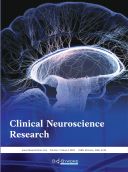Abstract
Objective: To explore, evaluate and analyze the effects of surgical treatment on endocrine functional hormone indexes in female patients with endocrine disorders caused by sellar region tumors. Methods: 600 female patients with endocrine disorders caused by sellar region tumors who were admitted to the Department of Neurosurgery of Yunan Shuifu People’s Hosptial and Beijing University of Chinese Medicine Third Affiliated Hospital from March 2018 to March 2023 were selected as the research subjects. The patients were divided into two groups, each consisting of 300 cases: the microscopic group received treatment via the microscopic transsphenoidal approach, while the endoscopic group underwent treatment through the neuroendoscopic transsphenoidal approach. The efficacy of both treatments and surgery-related indicators of the patients of both groups were compared. Besides, the endocrine functional hormone indicators, including estradiol (E2) and follicle-stimulating hormone (FSH) levels, were compared between the two groups before operation and 1 week after operation. Results: The efficacy of the treatment received by the endoscopic group was higher than that of the microscopic group, but the difference was not statistically significant (P > 0.05). The duration of operation and postoperative hospital stay of the endoscopic group were shorter than those of the microscopic group, and the intraoperative blood loss was less than that of the microscopic group, the differences were statistically significant (P < 0.05). The postoperative E2 and FSH levels of the two groups were higher than those before operation, and the E2 and FSH levels of the endoscopic group after treatment were higher than those of the microscopic group, and the difference was statistically significant (P < 0.05). Conclusion: The neuroendoscopic transsphenoidal approach for treating female patients with endocrine disorders caused by sellar region tumors proves to be more effective than the microscopic transsphenoidal approach. It enhances the levels of endocrine functional hormones and alleviates clinical symptoms, making it a promising approach worthy of wider adoption.
References
Jiang C, Wang X, Yang G, et al., 2019, Clinical Analysis of Sellar Region Tumors Combined with Sellar Region Aneurysms. China Journal of Neuropsychiatric Diseases, 45 (05): 271–275.
Deng Y, Zhu M, Liu Y, et al., 2020, Analysis of Early Postoperative Cognitive Function and Influencing Factors in Patients with Sellar Region Tumors. Journal of Practical Medicine, 36 (04): 543–547.
Miyakawa A, Kuwai T, Miyauchi T, et al., 2021, Gel Immersion Endoscopy-Facilitated Endoscopic Mucosal Resection of a Superficial Nonampullary Duodenal Epithelial Tumor: A Novel Approach. VideoGIE, 32(05): 22–27.
Wang H, Lu J, Chen Z, et al., 2021, Resection of Invasive Pituitary Tumors by Endoscopic Transnasal Approach. Journal of Nanjing Medical University (Natural Science Edition), 41(10): 1509–1512.
Qin S, Ruan X, Wang B, et al., 2020, Effect of Mature Follicular Sex Hormone Concentration on Pregnancy in Ovulation Induction Cycle in Patients with Polycystic Ovary Syndrome. Journal of Capital Medical University, 41(04): 530–535.
Chennoufi M, Boukhannous I, Mokhtari M, et al., 2021, Management of Bilateral Adrenal Myelolipoma Without Endocrine Disorder: About a Rare Case Report. Urology Case Reports, 39(1): 1017–1024.
Maggio AG, Shu HT, Laufer BI, et al., 2021, Impact of Exposures to Persistent Endocrine Disrupting Compounds on the Sperm Methylome in Regions Associated with Neurodevelopmental Disorders. 62(12): 68–75.
Huang W, Ren M, Peng G, et al., 2021, Etiology of Intracranial Infection and its Influencing Factors After Transsphenoidal Pituitary Tumor Resection. Chinese Journal of Hospital Infection, 31(06): 876–880.
Zhang F, Chen J, Zhang Y, et al., 2021, Risk Factors for Intracranial Infection After Transsphenoidal Pituitary Tumor Resection. Chinese Journal of Hospital Infection, 31(14): 2174–2178.
Abu Baker F, Taher R, Ganayem M, et al., 2021, Obstructive Colon Cancers at Endoscopy are Associated with Advanced Tumor Stage and Poor Patient Outcome. A Retrospective Study on 398 Patients. European journal of Gastroenterology and Hepatology, 33(1): 819–825.
Zhao Z, Park Y, Yang Y, et al., 2021, Clinical Features and Imaging Findings of Sphenoid Sinus Ectopic Pituitary Tumors. Journal of Clinical Radiology, 40(10): 1860–1864.
Paoletti C, Regan MM, Niman SM, et al., 2021, Circulating Tumor Cell Number and Endocrine Therapy Index in ER Positive Metastatic Breast Cancer Patients. NPJ Breast Cancer, 7(1): 1027–1032.
Zhang X, Wang X, Qian A, et al., 2022, Analysis of Short-Term Death Causes and Risk Factors After Transsphenoidal Endoscopic Resection of Sellar Tumors. Journal of Army Medical University, 44(10): 1041–1047.
Rahim T, Musaddiq A, Kim DS, 2021, e-Health and Resource Management Scheme for a Deep Learning-based Detection of Tumor in Wireless Capsule Endoscopy Videos. Proceedings of the International Conference on Ubiquitous and Future Networks. IEEE, 27(3): 723–726.
Gao D, Yang G, Huo G, et al., 2022, The Application of Bone-Membrane Mosaic Technology In Situ in the Operation Area in the Mid-Flow Cerebrospinal Fluid Leakage During Resection of Transsphenoidal Pituitary Tumors. Journal of Xi’an Jiaotong University (Medical Edition), 43(04): 560–565.
Wang H, Cheng L, Xu S, 2020, Clinical Observation of 232 Cases of Pituitary Adenoma Resection Under Endoscopy on Olfactory Function. Journal of Shandong University (Medical Edition), 58 (08): 95–100.
Jawaid SA, Othman MO, 2022, Small G1 type III Gastric Neuroendocrine Cell Tumor Showing Scirrhous Invasion and Lymph Node Metastasis. Gastrointestinal Endoscopy, 31(1): 95–103.
Endo Y, Fukuzawa T, Irie M, et al., 2022, Intraoperative Placement of an Absorbable Spacer Prior to Radiation Therapy for a Malignant Peripheral Nerve Sheath Tumor. Case Reports in Oncology, 15(6): 824–828.
Peng Q, 2022, Clinical Treatment and Effect Research on Patients with Gynecological Endocrine Disorders. Electronic Journal of Practical Gynecological Endocrinology, 9(04): 114–116.
Wang Y, 2021, Clinical Efficacy Analysis of Integrated Traditional Chinese and Western Medicine in the Treatment of Gynecological Endocrine Disorders. Electronic Journal of Practical Gynecological Endocrinology, 8(21): 68–71.
